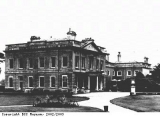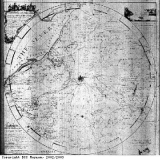Profits
The profits that traders and plantation owners made from the slave trade and slave labour could be large. Such profits were not necessarily put back into the business. Instead, many chose to spend their money on home comforts and invested in property. By the mid 1700s, many people who lived in Bristol who were involved in the slave trade or who owned (but did not live on) Caribbean plantations moved out of the central area of Bristol. They moved to areas such as Clifton that were considered then to be ‘leafy suburbs’.
Some traders and plantation owners moved further out of the city to live in the surrounding countryside, adopting the style of the country landowner. Henry Hobhouse for example, from a slave trading family, acquired land at Castle Cary, in nearby Somerset. The Harfords, whose brass factories provided trade goods to the slave traders, bought property in Cardiganshire, in south west Wales. Caleb Dickinson (who owned a Jamaican plantation and traded in sugar in Bristol), purchased King Weston house in Somerton, Somerset. The Helyar family, who also owned Jamaican sugar plantations, owned Coker Court in East Coker near Yeovil, Somerset.
This map of 1769 shows all the large houses and important householders in an 11 mile area circling Bristol. A number of houses listed on this map have links with the slave trade and its related economy. There are probably many other properties in the area which future research will show to have similar links.




